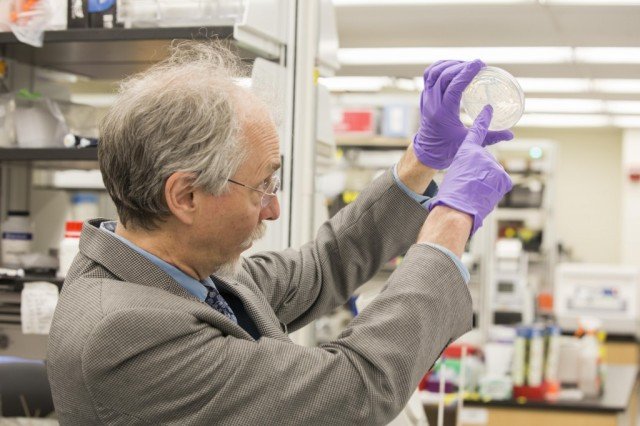Scientists create first synthetic chromosome for yeast
The first synthetic chromosome for yeast in a landmark for biological engineering has been created.
Previously synthetic DNA has been designed and made for simpler organisms such as bacteria.
As a form of life whose cells contain a nucleus, yeast is related to plants and animals and shares 2,000 genes with us.
So the creation of the first of yeast’s 16 chromosomes has been hailed as “a massive deal” in the emerging science of synthetic biology.
The genes in the original chromosome were replaced with synthetic versions and the finished manmade chromosome was then successfully integrated into a yeast cell.
The new cell was then observed to reproduce, passing a key test of viability.
Yeast is a favored target for this research because of its well-established use in key industries such as brewing and baking and its potential for future industrial applications.
One company in California has already used synthetic biology to create a strain of yeast that can produce artemisinin, an ingredient for an anti-malarial drug.

Dr. Jef Boeke of the Langone Medical Centre at New York University described the achievement as moving the needle in synthetic biology from theory to reality
The synthesis of chromosome III in yeast was undertaken by an international team and the findings are published in the journal Science. Yeast chromosomes are normally designated by Roman numerals.
Dr. Jef Boeke of the Langone Medical Centre at New York University, who led the team, described the achievement as “moving the needle in synthetic biology from theory to reality”.
The new chromosome, known as SynIII, involved designing and creating 273,871 base pairs of DNA – fewer than the 316,667 pairs in the original chromosome.
The researchers removed repeated sections in the original DNA and so-called “junk” DNA known not to code for any proteins – and they then added “tags” to the chromosome.
Dr. Jef Boeke said that despite making more than 50,000 changes to the DNA code in the chromosome, the yeast was not only “hardy” but had also gained new functions.
One new function is a chemical switch that allows researcher to “scramble” the chromosome into thousands of different variants making genetic manipulations far easier.
The hope is that the ability to create synthetic strains of yeast will allow these organisms to be harnessed for a wide range of uses including the manufacture of vaccines or more sustainable forms of biofuel.
While genetic modification involves transferring genes from one organism to another, synthetic biology goes far further by designing and then constructing entirely new genetic material.
Opponents of the field argue that scientists are “playing God” by designing new forms of life with the danger of unexpected consequences. A report for the Lloyds insurance market in 2009 warned that the new technology could pose unforeseen risks.
The synthesis of chromosome III is the first stage of an international project to synthesize yeast’s entire genome over the next few years.
The strains of yeast containing synthetic genetic material can only survive in a lab environment with specialist support.
To highlight the benefits of the work, Dr. Jef Boeke stresses the importance of yeast throughout human history and its potential for the future.
The paper describing the first synthetic chromosome concludes with a far-reaching vision looking beyond yeast to more sophisticated organisms, saying: “It will soon become feasible to synthesize eukaryotic genomes, including plant and animal genomes.”
[youtube Fo-LKmflRvo 650]
